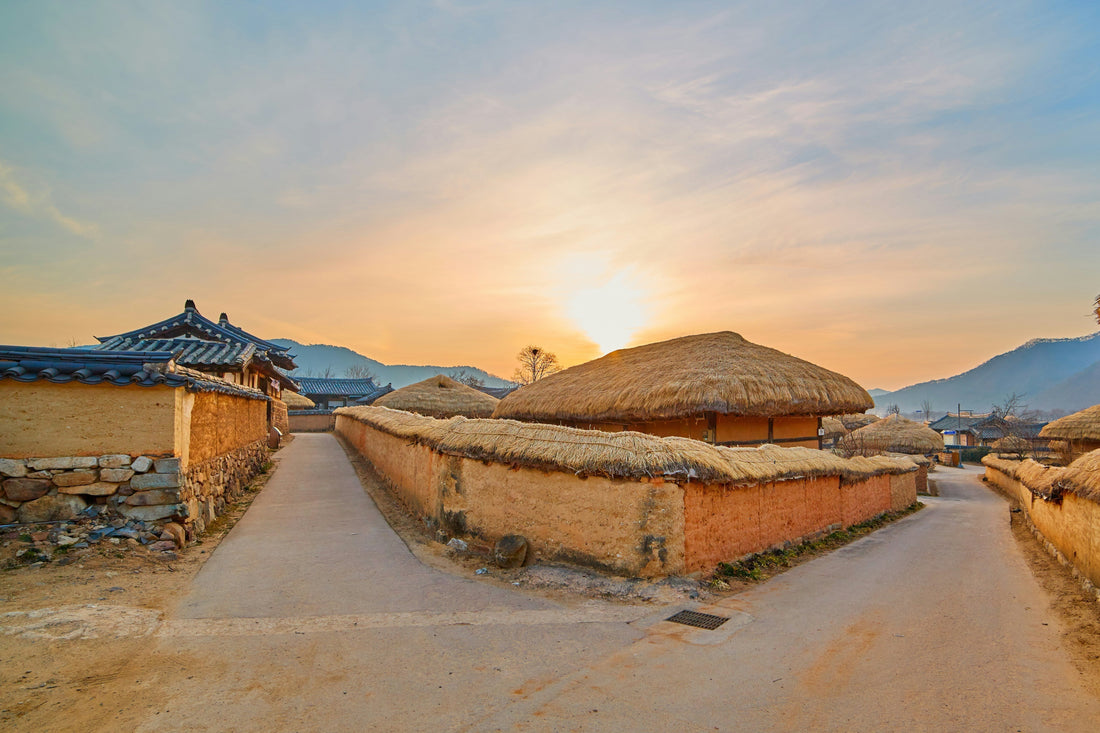
Andong Mask Dance Festival: A Daebak Celebration of Korean Culture
Daebak InternsShare
Every autumn, the quiet city of Andong transforms into a stage alive with color, rhythm, and centuries-old traditions. The Andong Mask Dance Festival isn’t just a performance, it’s a vibrant celebration of Korean culture, bringing together history, folklore, and artistry in a way that feels both timeless and fresh. For travelers exploring the heart of the Hallyu wave beyond Seoul’s skyscrapers and K-drama filming spots, this is a must-see cultural experience.

The Story Behind the Masks
The festival is rooted in talchum, a traditional Korean mask dance that combines music, dance, and theatrical storytelling. These performances often use humor and satire to challenge authority, poke fun at social norms, and share moral lessons, an art form that entertained commoners during the Joseon era. The masks themselves are striking: hand-carved, vividly painted, and each representing a distinct character such as noblemen, monks, or mischievous spirits. Each mask is a work of folk art, created by artisans who have inherited carving techniques passed down for generations. Many of these craftsmen live in Andong and take great pride in showcasing their skills during the festival, making it an excellent opportunity for visitors to see their process up close.

Unlike the glossy perfection of K-pop merch or modern hallyu idols, these masks celebrate imperfection. A crooked smile, exaggerated eyebrows, or bulging eyes each carries meaning, designed to be seen clearly even from a distance. In traditional talchum, these exaggerated features help convey emotions to the audience without the need for elaborate dialogue, making the art form accessible even to those who don’t speak Korean.Watching a performance in Andong is like stepping back in time, yet the crowd’s energy makes it feel as alive as any modern concert.
What to Expect at the Festival
Held annually in late September to early October, the Andong Mask Dance Festival spans around ten days. Visitors can enjoy daily performances by local troupes and international dance teams, mask-making workshops, traditional games, and night parades. The festival also invites cultural groups from countries like Japan, China, and Indonesia, adding a global dimension to the event and creating a space for cross-cultural dialogue.
If you’re a fan of Korean drama, you might recognize similar traditional festival scenes from period series (sageuk). Experiencing it in person gives you a deeper appreciation for how these traditions still influence contemporary Korean storytelling.
Between performances, the festival becomes a paradise for food lovers. You’ll find stalls serving Korean snacks like hodu-gwaja (walnut cookies), tteokbokki, and the local Andong specialty jjimdak (braised chicken with vegetables and noodles). Food is central to the festival experience, and many locals see it as a chance to share their hometown flavors with visitors from around the world. It’s the perfect chance to taste both familiar and new flavors while soaking in the lively atmosphere.
For those wanting to bring a piece of Andong home, the Andong Regional Box offers curated local goods from traditional snacks to cultural souvenirs delivered right to your door.
Planning Your Trip to Andong
Andong is about three hours from Seoul by bus or train, making it a perfect weekend trip. The main festival venue is in Andong’s Talchum Park, but the city has much more to offer. Don’t miss Hahoe Folk Village, a UNESCO World Heritage site where traditional hanok houses are still lived in today. The village also hosts special mask dance performances during the festival, adding to the authenticity of the experience.

Accommodation options range from modern hotels to traditional guesthouses where you can sleep on heated floors (ondol) and wake up to views of tiled roofs and mountain mist.
For a touch of modern Korean fun during your travels, pack a few quirky items like the Wiggle Wiggle is Daebak collection, perfect for adding a pop of color to your trip photos and as a reminder of your journey.
Why the Festival Matters in Today’s Hallyu Era
As Hallyu continues to shape the world’s perception of Korea through K-pop goods, Korean drama, and viral beauty trends, the Andong Mask Dance Festival stands as a reminder of the country’s deep cultural roots. While the digital age makes it easy to consume Korean entertainment from afar, being part of a living tradition gives you a different kind of connection.
From the laughter that erupts during a cheeky monk’s dance to the shared rhythm of drums echoing through the crowd, the festival offers something that no streaming service or online store can replicate: the feeling of community.
For fans of Korean culture and Hallyu community members alike, it’s a daebak way to see how history, art, and everyday life come together. Whether you’re there for the performances, the Korean snacks, or the immersive atmosphere, Andong will leave you with memories that last far beyond the festival’s final drumbeat.

